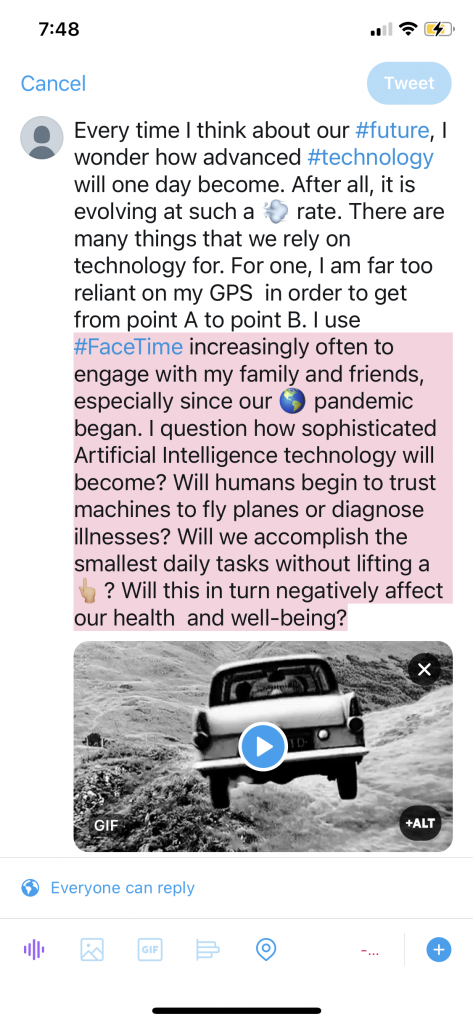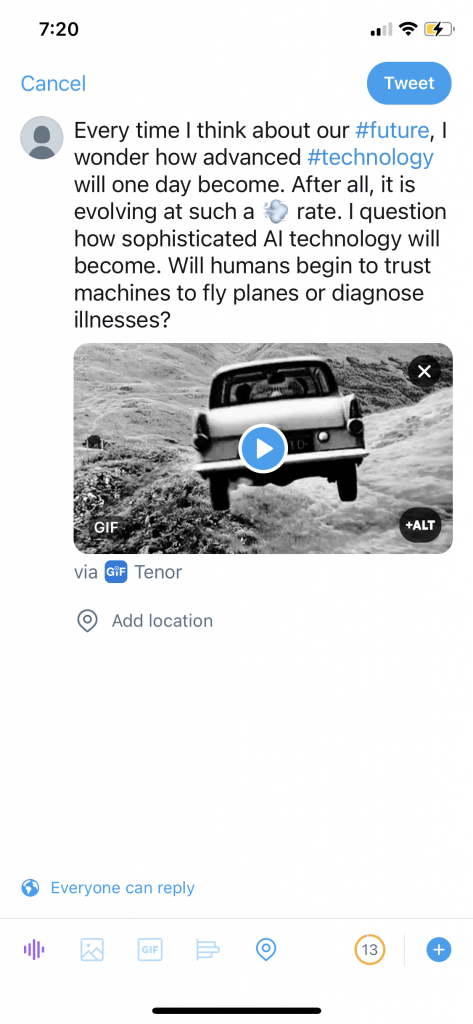

To engage in this task, I used the microblogging site Twitter to generate my statement. One thing that I noticed was that I couldn’t fit all that I wanted to say in the post due to a character limit (image 1). So, I really had to cut down on words and make my statement clear and concise (image 2).
In my opinion, statements like the one that I produced are often seen in a blog setting. These statements are quite different than ones that I would normally generate to express myself in an academic setting. Informal blogs are interactive and my statement includes a series of questions in an effort to invite feedback. Due to its informal nature, I feel that the voice in the statement definitely sounds like my own.
I took away some important information from this week’s reading and listening material. Several ideas stood out to me in the article titled “How can we stop algorithms telling lies?”. I am aware that algorithms are used in many different facets of our daily lives. It is suggested that trading algorithms use historical data to foresee movements in the market (O’Neil, 2017). Further, getting into college, getting a job, being assessed as a worker, getting a credit card or insurance, voting, and even policing are tasks often done algorithmically (O’Neil, 2017). I was unaware of the challenges that are associated with the use of algorithms. For one, there are many unintentional problems related to cultural bias that often arise due to algorithmic errors. It’s upsetting to know that Google searches for names perceived to be of a certain ethnicity can be related to things such as criminal activity. In some cases, I feel that predictive text can be helpful such as when writing an email. In other instances, such as when typing up a story, I find that it often acts as a distraction changing some of the thoughts that I initially had.
O’Neil, C. (2017, July 16). How can we stop algorithms telling lies? The Observer. Retrieved from https://www.theguardian.com/technology/2017/jul/16/how-can-we-stop-algorithms-telling-lies